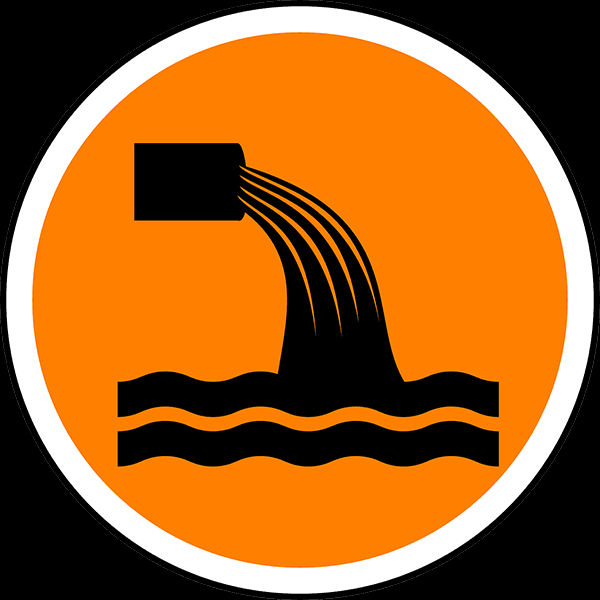An Unbiased View of Reclaim Waste
An Unbiased View of Reclaim Waste
Blog Article
The Definitive Guide for Reclaim Waste
Table of ContentsReclaim Waste for BeginnersThe Greatest Guide To Reclaim WasteThe Greatest Guide To Reclaim WasteThe Only Guide for Reclaim WasteHow Reclaim Waste can Save You Time, Stress, and Money.
Residential sewage waste refers to the waste and items from a domestic septic tank. The proper monitoring and disposal of domestic sewage waste require fluid waste to be moved to a sewer therapy plant where the proper methods and tools are applied to cleanse and dispose of waste.
Commercial waste usually consists of prospective hazards, such as flammable products or a blend of fluid and strong waste items, and requires an advanced and comprehensive disposal procedure. The disposal of industrial waste usually includes the filtering of waste prior to transport to guarantee safe and appropriate disposal. Hazardous waste is developed from byproducts and drainage of commercial processes and manufacturing.
This sort of waste can not make use of the very same sewage administration transportation or procedures as septic or commercial liquids. The industrial waste monitoring procedure calls for the evaluation and screening of fluid waste before it goes through the disposal process (industrial wastewater treatment). Runoff waste is the liquid waste that comes from drainage and excess stormwater in extremely populated areas or cities
Runoff waste can create contamination and flooding if not dealt with appropriately. Ensuring appropriate waste administration can protect against calamities and reduce ecological injury.
Reclaim Waste Fundamentals Explained
Call PROS Providers today to learn more about our waste monitoring and disposal services and the proper methods to look after the fluid waste you generate.
(https://www.domestika.org/en/reclaimwaste1)Do you know what occurs to your water when you pull the plug, flush the bathroom or drain the washing machine? No? Well, it deserves knowing. This so-called 'wastewater' is not only a vital resource however, after treatment, will certainly be released to our land, rivers or the sea. Utilized water from toilets, showers, baths, kitchen area sinks, washings and commercial processes is recognized as wastewater.

water utilized to cool down machinery or clean plant and tools). Stormwater, a kind of wastewater, is overflow that moves from farming and metropolitan locations such as roofings, parks, yards, roads, courses and gutters right into stormwater drains, after rain. Stormwater streams without treatment directly to regional creeks or rivers, ultimately reaching the ocean.
Indicators on Reclaim Waste You Should Know
In Queensland, the majority of wastewater is treated at sewage therapy plants. Wastewater is transferred from residential or industrial websites with a system of drains and pump terminals, referred to as sewage reticulation, to a sewage treatment plant. Local governments develop, keep and operate most sewage treatment plants. Operators are certified under the Environmental Management Act 1994 to release treated wastewater at an appropriate ecological standard into rivers.
The Department of Natural Resources suggests regional governments concerning handling, operating and maintaining sewerage systems and therapy plants. In unsewered locations, city governments may call for homeowners to set up private or house sewage treatment systems to deal with domestic wastewater from commodes, kitchens, restrooms and washings. The Department of Natural Resources authorises the use of house systems when they are proven to be efficient.
A lot of stormwater obtains no therapy. In some new class, treatment of some stormwater to remove trash, sand and crushed rock has actually started utilizing gross contaminant traps. Wastewater therapy happens in 4 phases: Eliminates solid issue. Larger solids, such as plastics and other items wrongly discharged to sewage systems, are removed when wastewater is passed through screens.
Wastewater after that moves into huge tanks where solids work out and are eliminated as sludge. Grease and residue are skimmed from the surface area. Uses tiny living organisms called micro-organisms to break down and get rid of remaining liquified wastes and fine fragments. Micro-organisms and wastes are included in the sludge. Gets rid of nitrogen and phosphorus nutrients that could cause algal flowers in our waterways and intimidate aquatic life.
The Best Strategy To Use For Reclaim Waste
Nutrient removal is not available in any way sewer therapy plants due to the fact that it calls for pricey specialized equipment. It is ending up being extra common in Queensland. Clear liquid effluent generated after treatment might still consist of disease-causing micro-organisms. If this effluent is released right into rivers such as rivers or the sea, the micro-organisms will at some point die out.

The majority of wastewater streams right into the sewerage system. Under the Act, regional governments carry website link out approvals and permits for ecologically pertinent tasks (Periods) including wastewater releases that could have a local effect.
More About Reclaim Waste
Monitoring supplies accurate info concerning water high quality and can validate that permit problems are being fulfilled. The details obtained through surveillance gives the basis for making water high quality choices.
Report this page